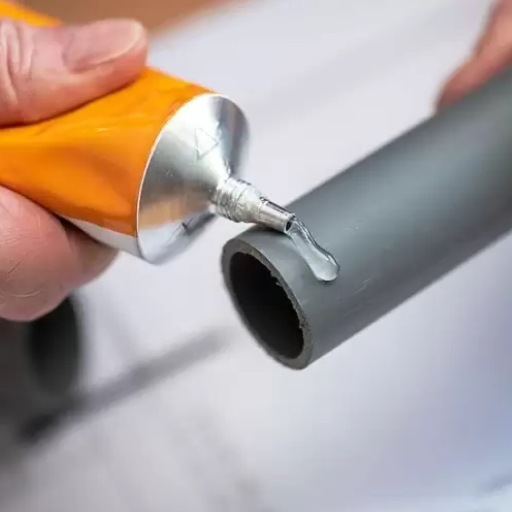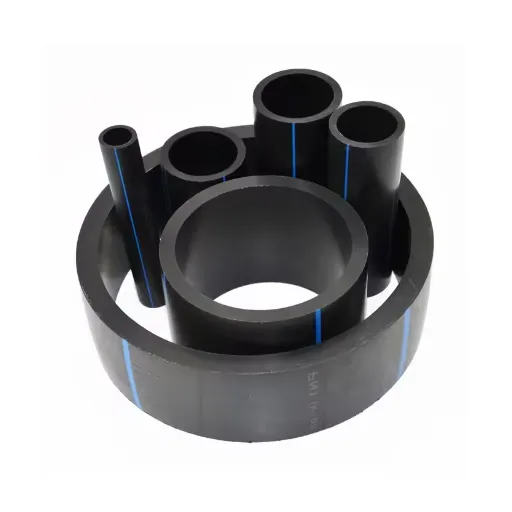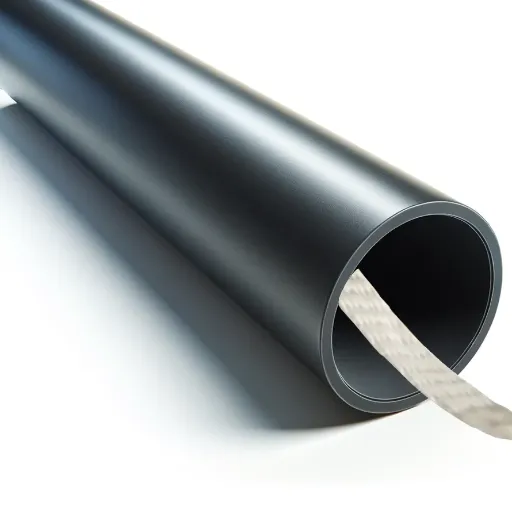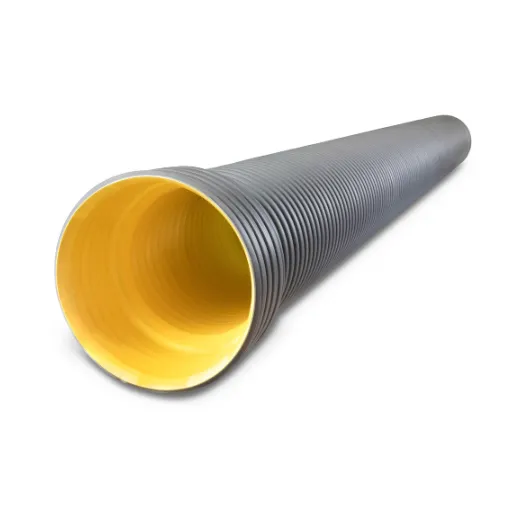High-Density Polyethylene (HDPE) pipes are valued across industries for their durability, flexibility, and resistance to corrosion. However, bonding HDPE pipes presents a unique set of challenges due to their low surface energy and chemical composition. This guide is designed to demystify the process of joining HDPE pipes effectively, with a focus on understanding the role of specialized adhesives, techniques, and considerations involved. Whether you’re a professional in the field or a DIY enthusiast seeking reliable solutions, this article will provide you with the essential knowledge to achieve strong, durable, and leak-proof bonds for your HDPE pipe projects.
Understanding HDPE Pipe Glue
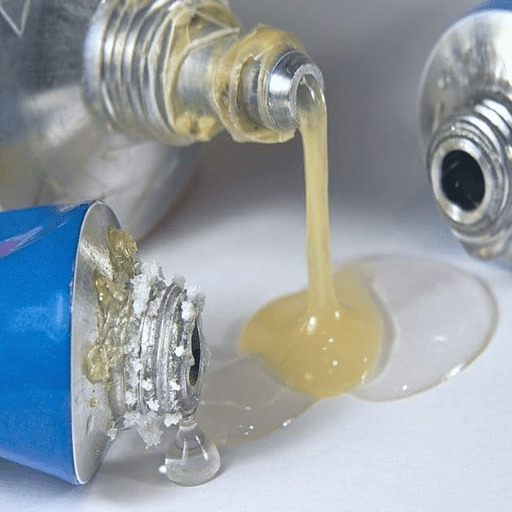
What is HDPE Pipe Glue?
HDPE pipe glue, more accurately known as HDPE pipe adhesive, is a bonding agent specialized in joining high-density polyethylene (HDPE) pipes. It is formulated to chemically bind with the pipe sections, providing a secure, waterproof connection. Unlike regular PVC or ABS glue, HDPE adhesives were made specifically to work on the non-polar surface of the HDPE material that would otherwise be quite resistant to any adhesion.
Basically, the glue slightly softens the HDPE material’s surface and, during curing, gets fused to an adjoining piece. To produce the best noise-free bond, correct surface preparation is vital, including cleaning and sometimes abrasion. The result can withstand changes and holds up very well with alternating temperature, pressure, and environmental exposure.
HDPE pipe glue is used in varied industries such as the plumbing, irrigation, and industrial sectors, where HDPE pipes are routinely installed due to their durability and resistance to chemicals. Now, having said that, one must understand that not all adhesives are universally compatible with HDPE, and one must use an adhesive that is as per the specification or rated for HDPE for the best results.
Types of HDPE Pipe Glue
- Solvent Adhesives: Solvent adhesives are used commonly in HDPE operations for their ability to cling chemically to the surface of the pipes via partial dissolution of the surface. They work best in situations that require long-term durability and are thus employed mostly for industrial applications. One would need to ensure that proper ventilation is provided during the application to prevent inhalation of volatile organic compounds (VOCs).
- Epoxy-Based Adhesives: Offering superior adhesion notwithstanding resistance to temperature and chemical exposure, epoxy-type adhesives are used in highly demanding environments such as chemical transport systems or constant temperature fluctuations. Epoxies require adequate curing and are best in terms of bond strength, as specified by the manufacturer.
- Urethane Adhesives: Polyurethane adhesives form a flexible yet sturdy bond and, therefore, are most preferable for applications subject to vibrations or movements of pipes. Moisture resistance further allows them to perform in different settings such as outdoors, in irrigation systems, or water distribution pipelines. On the downside, they may not be as chemical-resistant as epoxy adhesives.
Choosing the best HDPE pipe glue will depend on various aspects such as operating conditions, environmental conditions, application conditions, and so forth. Always go through the manufacturer’s specifications or guidelines to make sure that your adhesive is compatible and performs optimally.
Applications of HDPE Pipe Glue
Due to the formation of quick-fix bonds that finally hold things together, HDPE pipe glues find their application in different fields in industries, commerce, and homes. An elaborate list below describes five main applications where HDPE pipe glue is commonly employed:
- Water Supply Systems: Water supply distribution systems require HDPE pipe glue, where leak-proof and pressure-resistant bonds are to be ensured. It has been preferred wherever municipal or domestic water pipelines have to withstand varying water pressures with structural integrity.
- Irrigation Systems: Agricultural and landscape irrigation systems usually employ HDPE pipe glue to join their pipe and fitting sets. The glue keeps joints well-sealed against water ingress, notwithstanding an extended period of intermittent exposure to moisture and changes in temperature, along with water loss and efficiency.
- Industrial Chemical Transport: At the same time, it offers less chemical resistance compared to some of those epoxy-based ones, making it a popular choice for industrial waste pipelines where mild to moderate chemicals are transported. It creates durable seals that are immune to any leaks, ensuring the safety and handling of materials.
- Drainage and Sewage Systems: HDPE pipe glue sees use in drainage construction, including underground sewage pipelines. This glue accounts for their resistance to impacts, moisture levels, and shifting soil conditions from impurities in the disposal.
- Temporary and Portable Piping Solutions: HDPE pipe glue is useful in temporary piping systems for instances such as the water supply for construction sites or private fire suppression systems. This glue in addition to being fast curing and easy to apply all allow for rapid assembly and disassembly as required, ensuring the utmost efficiency and flexibility.
These case applications prove that, by virtue of their versatility, HDPE pipe glue can practically be applied in many different sectors, and therefore play an important role in ensuring functionality and durability of piping systems.
Benefits of Using HDPE Pipe Glue
Durability and Strength
One key characteristic of the durability of the HDPE pipe glue that has an impact on long-lasting reliability and functionality of the pipe connection is its ability to resist environmental factors such as UV radiation, temperature variations, and moisture. HDPE pipe glue remains intact in either an indoor or outdoor environment. This would be suitable for a level of very severe environmental exposure, such as chemical processing plants or underwater installations, where permanent adhesion is necessary in order to prevent leaks or failures.
High-bond strength joints ensure another type of strength that HDPE pipe glue has against heavy internal pressures and mechanical stresses. For instance, in municipal water systems or high-pressure irrigation, such glue secures the sealing with little chance for failure in the system. Laboratory tests proved that HDPE glued joints, when cured properly, have stronger tensile strength than the pipes and thus reduce system vulnerability and dependence on maintenance with time.
According to technical considerations, advanced polymer chemistry is utilized in modern formulations of HDPE pipe glue to build the bonding ability into the glue and, at the same time, weaken potential weaknesses. Engineers and industry experts understand that a proper adhesive that fits the specifications of the application greatly reduces the chances of connection failure. When installed with respect to exact installation techniques, including surface preparation and curing time, HDPE pipe glue constitutes the backbone of a piping system that is sufficiently strong and efficient for rigorous safety and performance standards.
Resistance to Environmental Factors
HDPE pipe glue systems are designed to withstand aggressive environments, providing a long life and reliability of the bond under various conditions. Protection against exposure to chemicals, moisture, radiation, and temperature is the main criterion in this resistance. The HDPE adhesives are supposed to maintain bonding integrity while being exposed to corrosive substances like acids or alkalis in uncommon industrial or agricultural scenarios. This chemical resistance prevents the wear and tear that would otherwise degrade performance as time passes, thus allowing greater longevity for the piping infrastructure.
The variability in temperature-induced expansion and contraction of tendered materials will not affect the adhesives’ bond efficiency maintained on HDPE pipes. Such adhesives are produced to tolerate high thermal tolerance, usually within extremely cold temperatures to highs past the 140°F (60°C) mark. By maintaining their flexibility and adhesion through these temperature changes, stress cracking, leakage, or peeling is prevented, ensuring the smooth working of these joints. Some manufacturers also provide the information on environmental tolerances of these adhesives in the data sheets to enable engineers to choose the most suitable solution that fits the site’s actual scenario.
Another important factor is UV radiation, whose long-term action can degrade certain materials. For outdoor use, HDPE pipe glue is formulated with UV-stable components or protected with coatings or wraps against harmful sunlight effects. Through long-term exposure, systems using superior adhesives coupled with competent installation have been demonstrated to resist environmental conditions exceedingly well, thus providing operational life exceeding industry-designated expectations. Such extraordinary durability makes HDPE pipe glue the most indispensable member in projects ranging from municipal water to industrial fluid conveyance.
Ease of Use and Application
Explanation of HDPE pipe glue application: Easy and fast, ensuring the glue works well in a variety of operational contexts. The first five key features will give you an idea of how easy this glue is to use and how practical it is:
- Fast curing time: HDPE pipe glue is meant to act and cure fast so as not to hold up the assembly procedure. Many glues, for example, develop their full bond strength in a day’s time, which helps the projects to be finished faster.
- Wide temperature tolerance: This glue is useful from very cold conditions to moderate heat within the temperature range between -40°F and 180°F (-40°C to 82°C), allowing it to be worked in different environmental settings.
- Easy application process: The glue can be applied using any typical tools or even manually, thus negating the requirement for the facility to invest in expensive specialized machinery. The simplicity of the application fits right into the workflows of construction easily, so very little or no training is necessary.
- Surface Prep Compatibility: This adhesive performs best, even on surfaces that may just be minimally prepared, as long as the surface is clean and free of dirt or debris. It is capable of bonding to various HDPE pipe finishes without heavy priming or conditioning of the surface.
- Sufficient Open Time: Typically, the glue formulations have a long open time, so installers can make any adjustments and alignments while gluing for utmost accuracy. The general open-time range is between 2 minutes and 5 minutes, giving handlers plenty of time and flexibility.
These features, evidenced by material performance testing data, make the case for the HDPE pipe glue’s current-day applications; an adhesive that is practical and reliable.
Proper Application Techniques
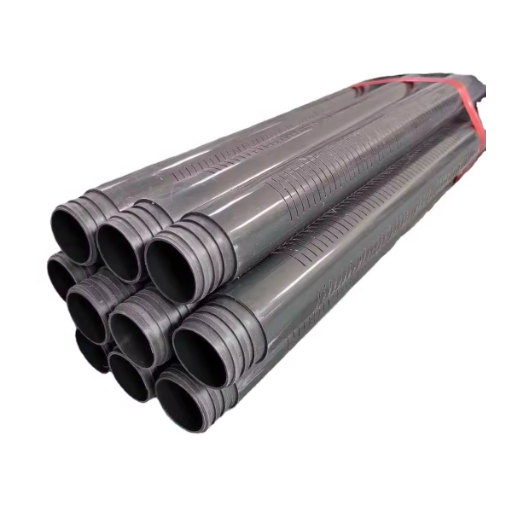
Step-by-Step Guide to Using HDPE Pipe Glue
- Surface Preparation: In preparation for bonding, start by scrupulously cleaning the pipe surfaces. This will ensure maximum adhesion and will keep the contaminants out of the bonding process. It is a good practice to give the pipe surface a wipe with a clean lint-free cloth to get rid of any dust, grease, or debris. For better results, consider the application of a pipe cleaner solution specifically meant for polymer-based materials such as HDPE.
- Dry Fit the Pipes: Once the wire is being procured, a dry fitting of the two pipes should be done to check their alignment and positioning aspects, with the hope that an adjustment may need to be made, in order to avoid mistakes in the bonding process. Mark the reference points with a pencil or marker.
- Apply the Adhesive Evenly: In several places, HDPE pipe glue is to be applied with the use of an applicator brush upon both the inner surface of the fitting and the outer surface of the pipe, following the directions for withering, deterioration, or weakening. It may be applied to a surface of some gluing areas and lacking in others, which may lead to an imperfect bond. Too much glue should also be avoided since the spilled material may collect inside the joint and cause issues.
- Begin Joining the Components and Aligning Them: The very instant the pipe and fitting are glued together, a gentle but firm pressure must be exerted on the pipe to seat it well into the fitting. It would be useful to release the pressure for just a second and rotate the pipe approximately a quarter turn on the longitudinal axis so that the adhesive coats both sides of the joint evenly. The alignment is made using the reference marks placed earlier during the dry-fitting stage.
- Allowing Initial Set: Maintain the perfect position for the pipe and fitting during the initial setting time stated; usually, it is about 1 to 3 minutes’ duration. Due to the initial setting period, the pipe must be held in position to avoid slipping and dislocation during the initial setting stage. The instruction of the manufacturer goes on to give exact periods.
- Curing Time: Once the bond is set, allow the adhesive to cure fully. Since curing depends on environmental variables such as temperature and humidity, the full cure can often take from 24 to 48 hours. No mechanical stress or pressing should be applied to the joint during this period.
- Pressure Testing: Once the adhesive is set, carry out a pressure test for the joint integrity. Slowly increase pressure until it reaches the system’s normal operating pressure level while watching for leaks or failures. Ensure that the testing protocol conforms to regulatory/safety guidelines.
This systematic approach, under good environmental conditions and following manufacturers’ specifications, maximizes the longevity and performance of the bonded HDPE pipes.
Safety Precautions When Handling Adhesives
As I am handling adhesives, I always consider safety first, including the proper use of the recommended PPE. This often means putting on safety glasses or goggles to shield my eyes from splashes; chemical-resistant gloves to protect my skin; and sometimes even a respirator when adhesive fumes are strong. Ventilation in the work area must also be ensured to avoid inhalation of harmful vapors.
Before using any adhesive, I habitually read and understand the manufacturer’s material safety data sheet (MSDS). It contains great information about the chemical constitution, associated hazards, and first aid measures for the adhesive that I am going to work with. Knowing such information enables me to deal properly with any accidental spill or exposure.
Keeping in line with the propriety of adhesive handling and storage, I store adhesives as per the recommendations given by the manufacturer, meaning they are kept in a cool and dry place away from sunlight glare and also kept away from the reach of children or unauthorized persons. A further step I take is to make sure all adhesive containers, the residues, and excess materials are disposed of properly, taking personal health and safety measures into consideration, and environmental factors, while following legal regulations applicable in my area for the disposal thereof. By observing all these safety measures, I am assured not only of my safety but also that of the materials I attach, so that their bonding remains unscathed during any process.
Common Mistakes to Avoid
Some of the common errors working with adhesives that can hinder the quality of a bond and risk user safety are:
- Improper Surface Preparation: Surfaces must be prepared and cleaned thoroughly for sure adhesion. A surface stained with dust, grease, or sometimes even moisture can interfere with the formation of an adhesive bond.
- Improper Adhesive Choice: One of the greatest mistakes is using one adhesive that is not applicable to the substrate. The adhesives are characterized based on the substrate and working environment in a case-by-case application.
- Applying Too Much or Too Little: If an excess amount of adhesive is applied, it will cure unevenly or immediately start to ooze from the space between the surfaces. Lack thereof frequently results in an inadequate bonding force. Follow instructions from the manufacturer for application to achieve high performance.
- Poor Environmental Practice: Some of these factors are atmospheric pressure, humidity levels, temperature, and UV exposure, affecting the performance of an adhesive. Not taking these into account typically results in premature bond failure or inadequate curing.
- Ignoring Safety Precautions: Failing to wear gloves or hand protection when handling chemicals or adhesives or ignoring eye protection, could result in injuries or chemical exposure. Working in an area lacking ventilation may expose one to vapors that could be harmful to respiratory health.
By being conscious and methodical about correct procedures, these issues may be circumvented in favor of a strong adhesive bond and safe working process conditions.
Comparing Bonding Solutions
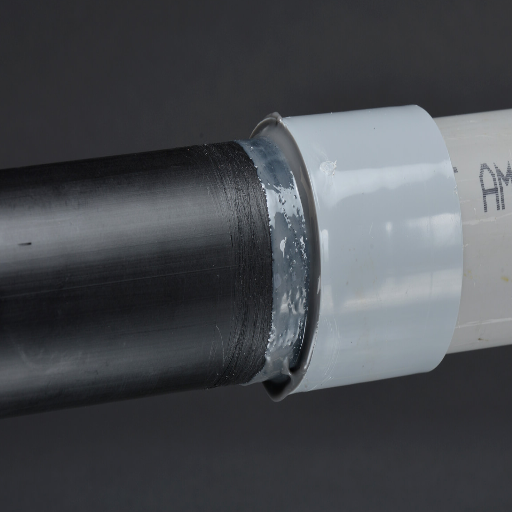
HDPE Glue vs. Welding
HDPE glue can be easiest and most versatile for small-scale or mixed-material projects, whereas welding offers strong, seamless bonds suitable for large-scale or HDPE-to-HDPE applications.
|
Aspect |
HDPE Glue |
Welding |
|---|---|---|
|
Bond Strength |
Moderate |
High |
|
Simplicity |
Easy |
Complex |
|
Expense |
Low |
High |
|
Tools Needed |
Basic |
Specialized |
|
Expertise |
Minimal |
Advanced |
|
Adaptability |
High |
Limited |
|
Longevity |
Moderate |
High |
|
Use Cases |
Mixed materials |
HDPE-only |
|
Preparation |
Quick |
Lengthy |
|
Eco-Friendliness |
Moderate |
High |
HDPE Glue vs. Mechanical Connections
While an HDPE-type glue is lightweight and versatile for mixed-material projects, mechanical fastening offers strong, reusable bonds better suited for applications where stresses are high.
|
Aspect |
HDPE Glue |
Mechanical |
|---|---|---|
|
Strength |
Moderate |
High |
|
Ease |
Simple |
Moderate |
|
Cost |
Low |
Moderate |
|
Tools |
Minimal |
Basic |
|
Skill |
Basic |
Moderate |
|
Durability |
Moderate |
High |
|
Flexibility |
High |
Low |
|
Reusability |
No |
Yes |
|
Applications |
Mixed materials |
High-stress |
|
Eco Impact |
Moderate |
Low |
When to Use PVC Fittings
PVC (Polyvinyl Chloride) fittings form an integral part and very important assembly promoting all piping applications and their construction applications, given their strength, versatility, and cost-effectiveness. Being suitable for low pressures and non-corrosive nature makes these fittings a first selection in irrigation, plumbing, drainage, etc. Further industry uses of PVC arise from its inherent chemical resistance to almost all fluids, ranging from water, acids, and a few alkalis.
In situations where being lightweight and having quick installation matter, PVC fittings come into play. More so, they are modular, allowing the fitting to be connected or altered swiftly without the need for special tools or glues by way of solvent welding, which creates weld-ins that are stronger-than-the-joint-themselves and leak-proof. Moreover, they offer excellent resistance against degrading factors of the environment, including UV exposures, along with microbial growth, thereby enhancing their long-term durability when applied in both indoor and outdoor settings.
PVC fittings are extensively used in agriculture, construction, and chemical processing because of their cost benefits, low maintenance, and longer life. However, they find their oddity in the application fields of high temperatures and pressures, PVC being thermally and mechanically limited. Evaluating system needs and the surrounding environment would render PVC fittings as a dependable and economic solution based on specification demands.
Expert Insights and Case Studies
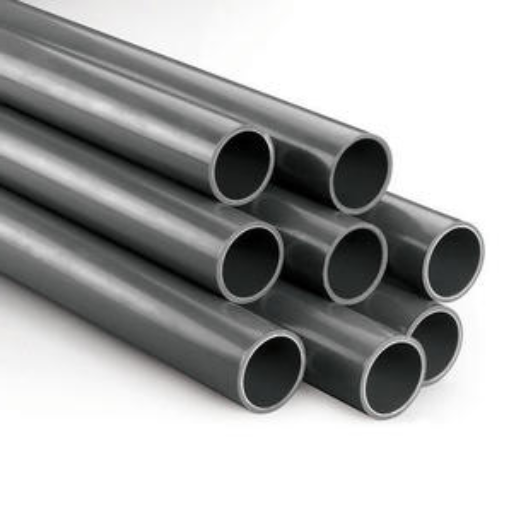
Industry Professional Recommendations
Industry professionals recommend undertaking a thorough material compatibility assessment upon considering the application of PVC fittings in industrial settings. Experts specify the need to consider the chemical composition of the fluids to be transported, since circumstances involving excessively prolonged contact with aggressive chemicals like aromatic hydrocarbons or strong acids might degrade the strength of PVC materials. Also, the thermal limitations of PVC, generally about 140°F (60°C), should command its use within temperature-controlled environments so as not to lose its shape or fail.
With the present industry tendencies, one can see the rising use of CPVC or Chlorinated Polyvinyl Chloride as an alternate while higher temperatures are at play, thus giving several degrees in thermal resistance with cost-effectiveness considered with traditional PVC. Data-driven case studies reveal less maintenance costs, as much as 25-30% less, from the applications of PVC and CPVC solutions since they corrode less compared to their metal counterparts.
For their longevity in operation, it is advised by experts to check the pressure rating calculations correctly, as PVC fittings have set limits depending on pipe size, schedule, and environment. Referring to pressure versus temperature derating charts ensures that the pressures applied are kept within the recommended limits, hence further ensuring their safety and compliance. Such considerations form a larger base in the optimization of the performance and would therefore definitely contribute to the possibility of using PVC fittings in various industrial locales.
Future Trends in HDPE Adhesives
HDPE adhesive technology is constantly evolving in concert with advances in material sciences and engineering. One major trend affecting adhesives is nanotechnology. Addition of nanoscale additives, such as silica or clay nanoparticles, results in an increase in the mechanical and thermal stability of HDPE adhesives, hence improving their performance under harsh environmental conditions, such as in high-pressure systems or fluctuating temperatures.
Another trend growing rapidly is that of eco-friendliness and sustainability in adhesive formulations. Researchers seek to introduce bio-based adhesives made from renewable feedstock into the market with reduced environmental impact. These formulations intend to achieve adhesion and durability comparable to those of traditional products but should also meet stringent environmental regulations.
The automation and digitization are also stepping in to reshape the application processes for HDPE adhesives. From advanced dispensing systems for precision application to AI-based quality control systems, the industry is looking for efficiency and consistency. All of these really cut back on material waste and labor costs and definitely put HDPE adhesive systems in the limelight for massive infrastructure projects.
Market data seem to indicate the increasing demand for solvent-less and low-VOC (volatile organic compound) types, as environmental consciousness and legal pressure build up. Also, with the growth of modular and prefabricated construction methods, demand has increased for high-performance adhesives that speed up assembly without compromising structural integrity.
In accord with these trends and with the improvements in adhesive testing and standardization, the role of HDPE adhesives in water distribution, gas pipelines, and chemical processing is expected to change. This trajectory assures us that HDPE adhesive technologies will still be a crucial element of modern-day engineering solutions in the coming years.
References
Frequently Asked Questions (FAQ)
Q: What is HDPE pipe glue used for?
A: HDPE pipe glue is an adhesive designed specifically for bonding high-density polyethylene (HDPE) pipes and fittings. It is commonly used in applications involving water supply, drainage systems, and various plumbing needs due to its ability to create a strong, water-tight seal.
Q: How does HDPE pipe glue work?
A: The glue relies on a chemical bond that forms between the surfaces of the HDPE materials. This high-strength adhesive is formulated to bond products effectively, ensuring a durable connection that can withstand pressure and environmental factors.
Q: Can HDPE pipe glue be used on dissimilar materials?
A: While HDPE pipe glue is primarily designed for high-density polyethylene, some adhesives claim to be able to bond dissimilar materials. However, for best results, it is advisable to use adhesives specifically designed for the materials in question, like PVC or polypropylene.
Q: What are the benefits of using HDPE pipe glue?
A: The benefits include its high strength, flexibility, and resistance to environmental factors. HDPE pipe glue provides a cost-effective and reliable solution for joining HDPE pipes and fittings, ensuring a long-lasting bond that is essential for drainage and water supply systems.
Q: Are there different types of HDPE pipe glue?
A: Yes, there are various types of HDPE pipe glue, including two-part adhesives and those designed for specific applications. Some glues may rely on a mechanical bond, while others provide a chemical bond for enhanced durability.
Q: How do I prepare HDPE pipes for gluing?
A: Proper preparation involves cleaning the surfaces of the HDPE pipes and fittings to remove any dirt, grease, or contaminants. This step is crucial to ensure a strong bond and achieve the best results with the adhesive used.
Q: Can HDPE pipe glue be used in fusion welding?
A: No, HDPE pipe glue is not typically used in fusion welding. Instead, fusion methods, such as electrofusion welding, are employed to create joints in HDPE piping systems. HDPE pipe glue serves as an alternative connection method when fusion welding is not feasible.
Q: What is the best choice for bonding HDPE pipes?
A: The best choice for bonding HDPE pipes is a high-strength adhesive specifically designed for high-density polyethylene. This ensures a reliable and durable connection that is resistant to leaks and can handle the physical properties of the materials.
Q: How do I ensure a water-tight seal with HDPE pipe glue?
A: To achieve a water-tight seal, ensure that the surfaces are clean, apply the glue evenly, and allow it to cure according to the manufacturer’s instructions. Properly aligned connections and sufficient curing time are essential for a secure bond.
Q: What are the physical properties of HDPE pipe glue?
A: HDPE pipe glue exhibits elastic properties, allowing it to withstand stress and movement in pipe systems. It is also designed to be rigid and maintain its integrity under various environmental conditions, making it a reliable adhesive for HDPE applications.



